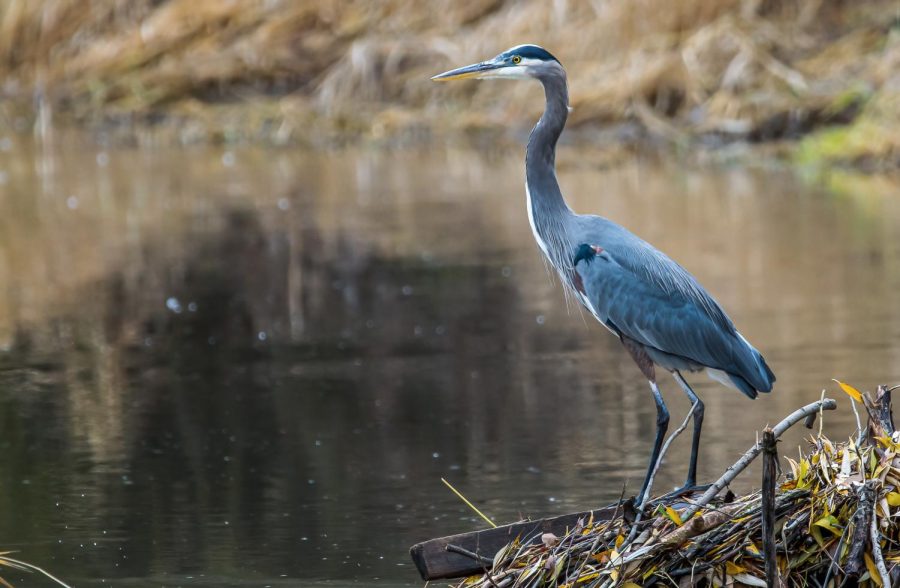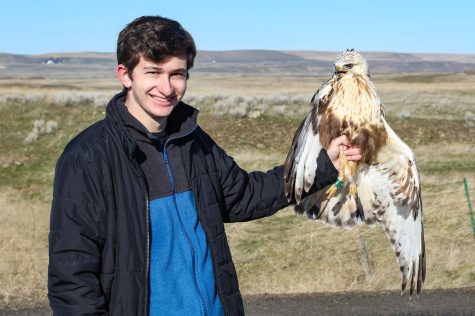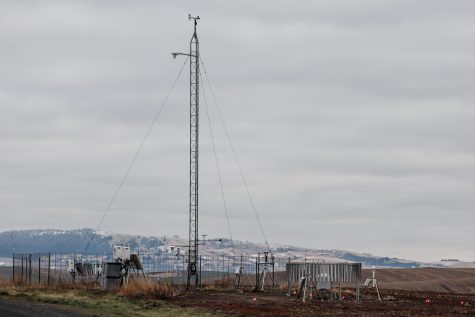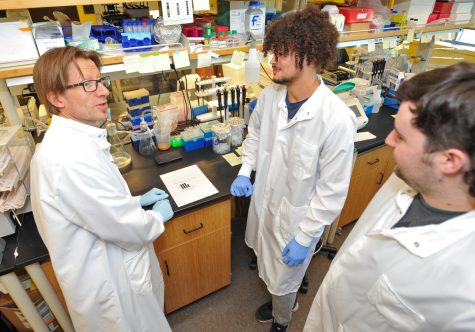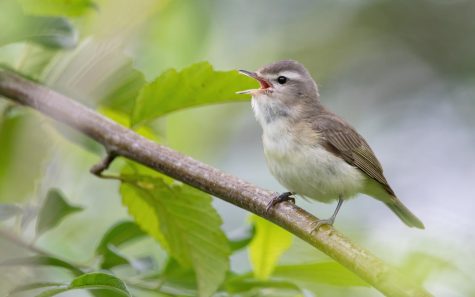Wildlife of the Week: Great blue heron
Conservation helps save resilient bird species
A Great Blue Heron patiently waits for fish while hunting in the middle of Paradise Creek, Nov. 13, 2021, in Pullman.
January 27, 2022
Herons are a well-known icon of marshes and wetlands, but the many species of heron found worldwide are well-adapted to fit most habitats. Of those species, one of the most well-adapted is the great blue heron.
Found commonly throughout the U.S. and South America, according to eBird.org, it thrives in almost every location it is found in. In the Palouse, these herons can often be seen far from water in the wheat fields; they slowly step through the crops in search of rodents to quickly snatch up. In Pullman, they tend to spend time along Paradise Creek. Here they hunt for fish, crayfish and anything else they can catch, including large bugs out of the air.
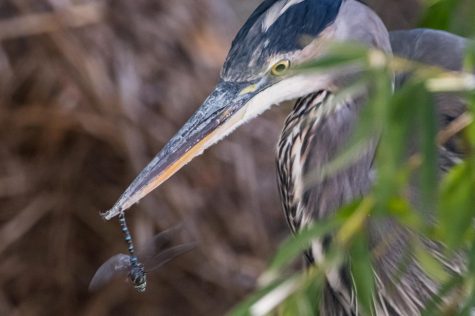
A Great Blue Heron catches a dragonfly along Paradise Creek, Sept. 30, 2020, in Pullman.
These “modern dinosaurs” are prevalent in the U.S., but they were not always so common. Though a handful of bird species have expanded their ranges thanks to the spread of human development — such as the barred owl and brown-headed cowbird — great blue herons are one of many who have been negatively impacted by it.
The species was heavily hunted for the feathery plumes on their heads, which were used for clothing decoration, according to Birds of the World. Additionally, breeding colonies were regularly disturbed as human populations grew and cities expanded by cutting down waterfront trees. However, the species’ populations are resilient and appear to be growing again after increases in conservation.

